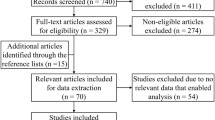Abstract
Objective: To analyse distributions of a urinary ratio of caffeine metabolites (MRc) representative of cytochrome P450 (CYP) 1A2 activity in a cohort of Caucasian German healthy volunteers and to re-assess the effects of smoking and oral contraceptives on the range and type of MRc distribution.
Methods: A cohort of volunteers comprising 192 individuals (96 males, 96 females) was divided into subgroups according to smoking and/or use of oral contraceptives. The CYP1A2 substrate caffeine was administered, and urine was collected for 6 h and analysed for representative caffeine metabolites. Distribution of a CYP1A2-dependent MRc was analysed using cumulative distribution (probit) plots and Rosin-Rammler-Sperling-Weibull (RRSW) functions.
Results: Cumulative distribution curves for males, and females, without further subgrouping for smoking habits and/or oral contraceptive steroid (OCS) consumption, showed slightly higher MRc values, i.e. slightly higher CYP1A2 activities, in males. Significantly higher MRc values were found in smokers of both sexes than in non-smokers. The distributions among female non-smokers or smokers with and without OCS were nearly superimposible, however. For the two male subgroups, the sum of two RRSW functions resulted in a better adjustment to the data than a unimodal skewed distribution. A weak correlation between MRc and the number of cigarettes smoked per day was found.
Conclusion: The inducing effect of smoking on CYP1A2 activity was confirmed, whereas no significant inhibitory effect of oral contraceptives was observed. The finding that the data are compatible with bimodal distributions in non-smokers suggests a significant impact of genetic factors on MRc. Among smokers, data were also compatible with bimodal distributions, i.e. with the existence of a “non-responder” phenotype concerning CYP1A2 induction by compounds present in tobacco smoke.
Similar content being viewed by others
Author information
Authors and Affiliations
Additional information
Received: 16 December 1996 / Accepted in revised form: 9 October 1997
Rights and permissions
About this article
Cite this article
Schrenk, D., Brockmeier, D., Mörike, K. et al. A distribution study of CYP1A2 phenotypes among smokers and non-smokers in a cohort of healthy Caucasian volunteers. E J Clin Pharmacol 53, 361–367 (1998). https://doi.org/10.1007/s002280050394
Issue Date:
DOI: https://doi.org/10.1007/s002280050394




